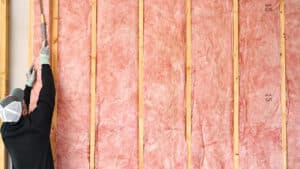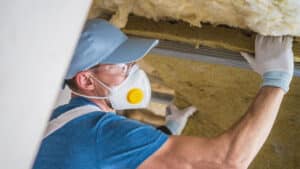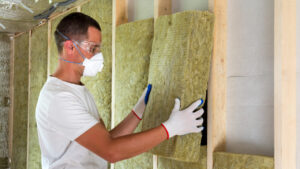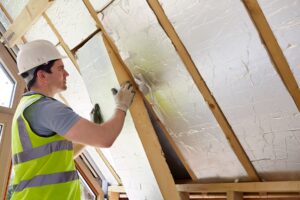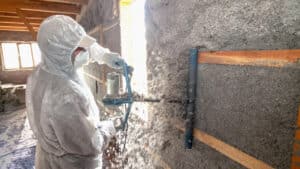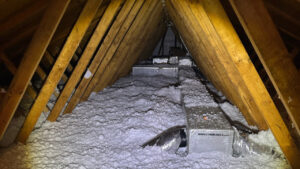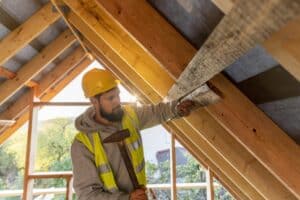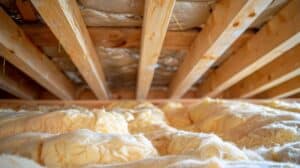As homeowners, we’re always looking for ways to lower our energy use and cut down on utility costs. One of the most effective strategies is ensuring your home is properly insulated. Proper insulation installation done by experts ends up being one of the best ways to maintain energy efficiency over time.
Effective insulation not only reduces energy costs but also plays a crucial role in protecting the environment. By minimizing heat transfer, well-installed insulation helps decrease pollution from excessive energy consumption and preserves natural resources like water.
In this article, we’ll explore best practices for insulation installation that can maximize your home’s energy efficiency.
Assess Your Home’s Insulation Needs
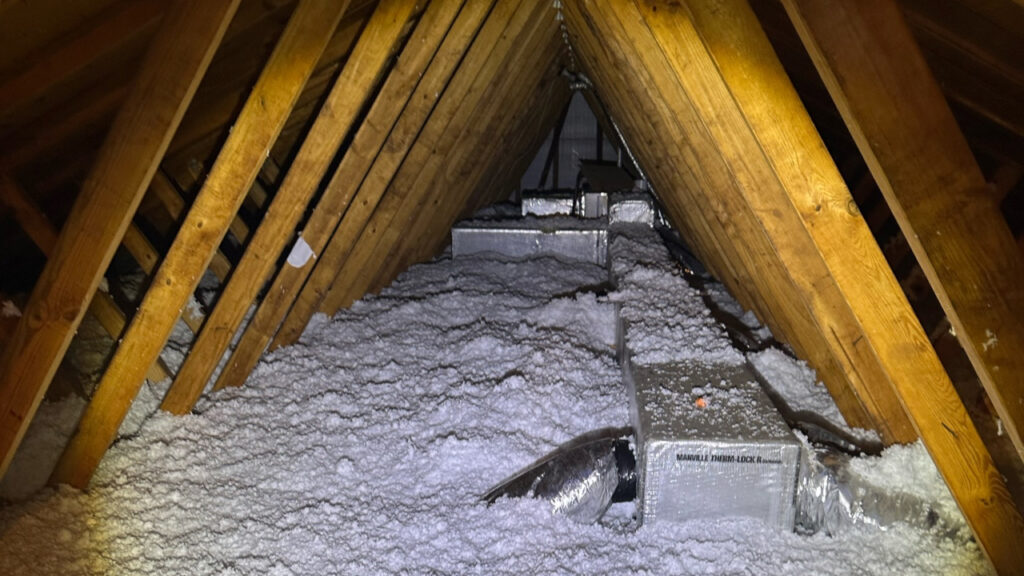
Evaluating a home’s insulation needs involves assessing each area that can be a detriment to energy conservation. Proper insulation reduces energy consumption and helps protect the environment by minimizing the use of natural resources and waste.
Key areas to inspect include:
- Attics: Since heat rises, a well-insulated attic is vital for preventing heat loss.
- Walls: Insulating walls help maintain indoor temperatures by minimizing heat loss.
- Floors and Crawlspaces: Insulating these areas prevents heat loss through the ground and maintains consistent indoor temperatures.
- Windows and Doors: Ensure proper weather stripping and sealing to reduce heat loss or gain.
Inspecting your insulation may require crawling and climbing into tight spaces. However, this extra work is worth it because the assessment can identify where insulation is lacking or damaged, allowing for targeted improvements through professional insulation removal or replacement.
Choose the Right Type of Insulation
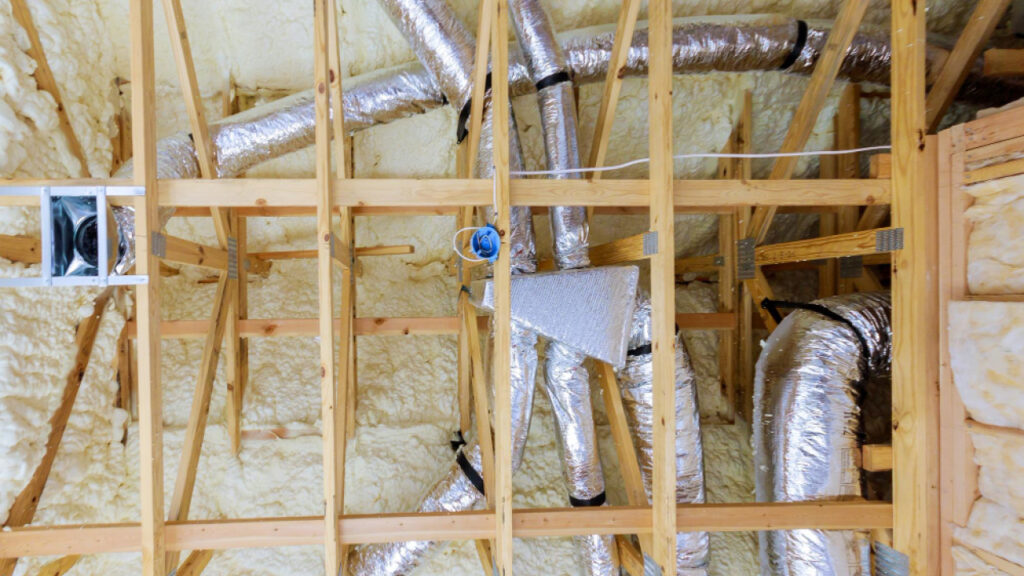
Choosing the right insulation is crucial for enhancing a home’s energy efficiency and comfort. Factors such as climate, construction methods, and environmental considerations influence the decision.
Each type offers specific advantages in thermal performance, moisture resistance, and fire safety. Understanding these options helps homeowners make informed decisions.
Fiberglass Insulation
Fiberglass insulation is popular due to its effectiveness and affordability. Composed of fine glass fibers, it provides excellent thermal resistance and adapts well to various climates.
Fiberglass works by trapping air pockets within the glass fibers to create a barrier against heat transfer. Because the air gets trapped it makes a veritable wall that stops heat from passing through. The design of fiberglass allows for gains in energy efficiency.
Because Fiberglass is composed of glass fibers it offers natural pest control as the material is not easily of comfortably turned into a nest for most native species of Virginia. For detailed installation guidelines, homeowners can refer to manufacturer-provided PDF resources:
| Property | Benefit |
|---|---|
| Thermal Resistance | Reduces heat transfer |
| Pest Resistance | Deters insects and rodents |
| Fire Resistance | Enhances home safety |
| Eco-Friendly | Contains recycled materials |
Cellulose Insulation
Cellulose insulation, made from recycled paper products, offers a sustainable insulation option. It provides excellent thermal performance and includes borate treatment to deter pests. Its ability to fill small spaces and cavities reduces air infiltration, enhancing energy efficiency and minimizing heat loss. While not regulated by a formal organization, manufacturers follow industry standards and best practices to ensure quality, similar to nutrient management in agriculture.
Spray Foam Insulation
Spray foam insulation, though not offered by Universal Insulation Doctor, remains a popular choice for its superior air sealing and moisture barrier properties. This type of insulation is valued for its superior air sealing and moisture barrier properties. It expands to fill gaps and cracks, creating a tight thermal envelope that reduces energy costs.
Spray foam insulation helps preserve the habitat of a home by preventing air and moisture infiltration. Installation requires specialized equipment and expertise, and homeowners should be aware of local regulations, as improper installation can lead to issues similar to a malfunctioning septic tank affecting groundwater quality.
| Feature | Benefit |
|---|---|
| Air Sealing | Prevents drafts and energy loss |
| Moisture Barrier | Protects against mold and rot |
| R-value per Inch | High insulation performance |
| Longevity | Maintains effectiveness over time |
Mineral Wool Insulation
Mineral wool insulation, made from recycled materials and natural rock, provides exceptional thermal performance and fire resistance. This eco-friendly option supports energy efficiency and sustainability by reducing energy consumption – one of the main reasons it is so often included in green infrastructure projects.
Its structure offers excellent sound absorption, making it ideal for creating quiet indoor environments. Additionally, its moisture-resistant properties help prevent mold growth, contributing to a healthy habitat for residents.
- Excellent thermal and acoustic insulation
- Fire-resistant and moisture-resistant
- Contributes to energy efficiency and sustainability
- Supports healthy indoor environments
Proper Installation Techniques
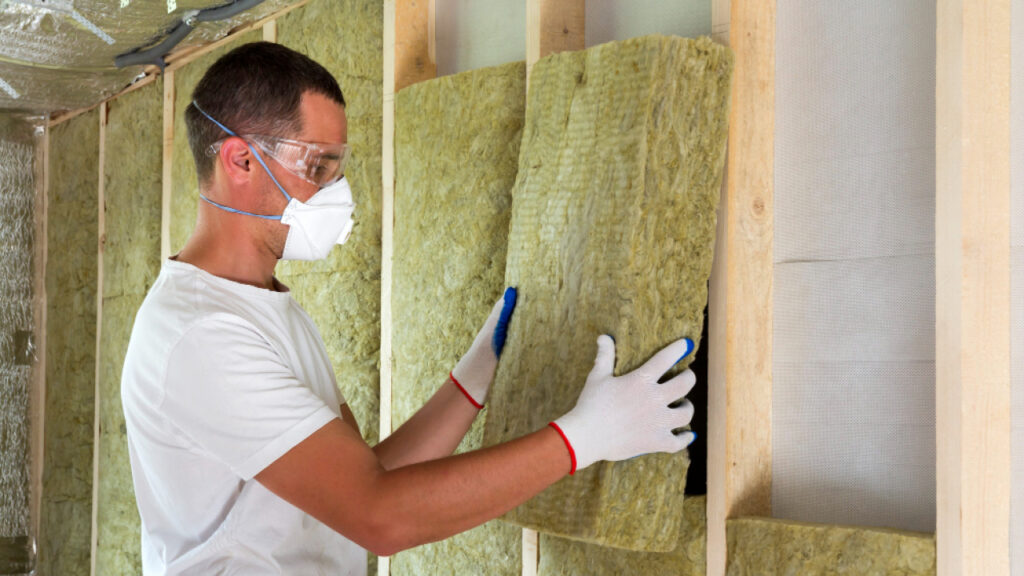
To realize the gains of new insulation it’s important that you manage to get it installed properly. Installing the correct insulation in ways that leave air pockets or holes defeats the purpose of your investment. So proper insulation installation is essential. It requires a multifaceted approach, including sealing air leaks, understanding R-values, using professional installation techniques, ensuring adequate ventilation, and following safety protocols.
Like professional certification in various fields, effective insulation installation demands expertise and attention to detail. Following these best practices helps create a more comfortable, energy-efficient living space while contributing to sustainability goals.
Seal Air Leaks
Sealing air leaks is essential for effective insulation, as it prevents outdoor air from entering and conditioned air from escaping. This reduces waste and improves efficiency while enhancing the warmth and cleanliness of your space by keeping pollutants and allergens out.
Proper air sealing contributes to a healthier indoor environment, similar to how sediment control measures protect water quality in construction. The following steps outline the process for sealing air leaks:
- Identify air leak locations using visual inspection or blower door tests
- Clean and prepare surfaces around leaks
- Apply appropriate sealants such as caulk or weatherstripping
- Install foam gaskets behind outlet and switch plates
- Seal gaps around windows, doors, and other penetrations
- Address larger openings with spray foam or rigid foam insulation
- Verify effectiveness of air sealing measures
Understand R-Values
Understanding R-values is crucial for effective insulation installation. Because certain areas in your home are going to be more directly in contact with outside temperatures, the effectivness of insulation in certain spots needs to be of higher caliber. R-values measure thermal resistance, indicating how well insulation materials prevent heat transfer.
Higher R-values signify better insulation performance. Following that logic, the insulation in your exterior walls or attic should be much warmer than the insulation between two interior rooms. Homeowners should consider the recommended R-values for their climate zone when selecting insulation materials:
- Attics: R-38 to R-60
- Walls: R-13 to R-21
- Floors: R-25 to R-30
- Crawlspaces: R-19 to R-25
- Basements: R-10 to R-19
Professional Installation
Certified installers address unique challenges in different home structures, maximizing R-values and minimizing thermal bridging. The installation process typically includes:
- Comprehensive home energy audit
- Selection of appropriate insulation materials
- Preparation of installation areas
- Proper sealing of air leaks
- Installation to manufacturer specifications
- Verification of coverage and depth
- Final inspection and quality checks
Ensure Adequate Ventilation
Accounting for proper ventilation is another important part of the process. You cannot just stuff an unmeasured amount of insulation all across your crawl space and expect it to work the way you expect. Adequate ventilation is crucial for maintaining indoor air quality and preventing moisture issues. The following table illustrates key considerations for ensuring adequate ventilation during insulation installation:
| Ventilation Area | Importance | Recommended Approach |
|---|---|---|
| Attic | Prevents moisture buildup | Install soffit and ridge vents |
| Crawlspace | Reduces mold growth risk | Use vapor barriers and vents |
| Living Spaces | Maintains air quality | Implement mechanical ventilation systems |
| Bathrooms/Kitchens | Removes excess moisture | Install exhaust fans vented to exterior |
Follow Safety Protocols
Insulation can be uncomfortable to work with and, if mishandled, lead to a variety of health issues. So, when handling insulation, wear protective gear and follow the manufacturer’s instructions to ensure safe installation. By prioritizing safety, insulation contractors demonstrate their commitment to professional standards and environmental responsibility:
| Safety Measure | Purpose | Implementation |
|---|---|---|
| Personal Protective Equipment | Protect against inhalation and skin irritation | Wear respirators, gloves, and protective clothing |
| Proper Ventilation | Reduce exposure to airborne particles | Use fans and open windows during installation |
| Fire Safety | Prevent fire hazards | Keep heat sources away from flammable materials |
| Electrical Safety | Avoid electrical shocks | Turn off power to work areas and use GFCI outlets |
Regular Maintenance
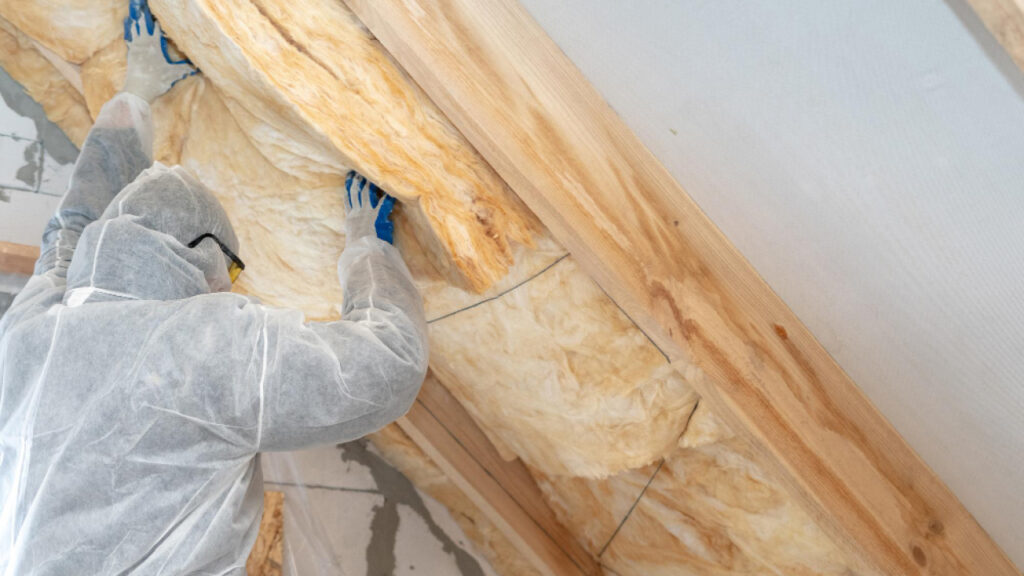
Regular maintenance of insulation systems is not hard but should be added to your household maintenance schedule. If you neglect it you may need to invest in pest control or a more regular insulation repair than if you were to stay on top of you insulation as it naturally degrades. Homeowners should establish maintenance schedules, perform routine inspections, and consider additional energy-efficient measures.
These practices help maintain insulation performance, improve energy conservation, and reduce stormwater runoff impacts.
Inspect Regularly
Inspect insulation systems annually for damage, settling, or moisture intrusion. Regular checks prevent small issues from becoming larger problems. An annual inspection should be fine and can be combined with a pest inspection.
Consider Additional Energy-Efficient Measures
Enhance insulation effectiveness by upgrading to energy-efficient windows and doors, installing programmable thermostats, or adding reflective barriers in attics. These measures complement insulation and contribute to overall energy conservation.
Utilize Smart Technologies
Integrate smart thermostats, humidity sensors, and energy monitoring systems to optimize insulation performance and energy efficiency. These tools provide real-time data on energy consumption and indoor conditions, helping homeowners make informed decisions about maintenance and upgrades.
Universal Insulation Doctor’s Professional Insulation Services
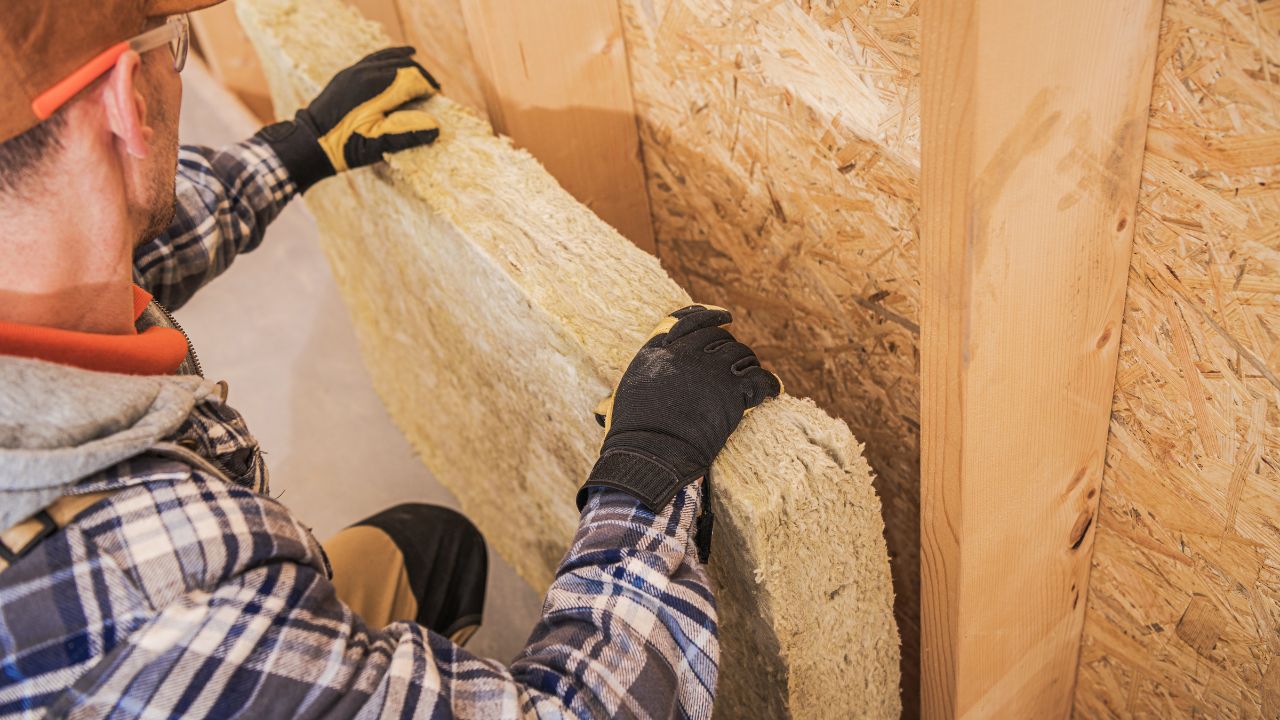
At Universal Insulation Doctor, we understand the significance of upholding effective insulation in your residence. Our insulation solution is designed to elevate the coziness and energy efficiency of your living areas.
We are one of the top insulation companies operating in and around Virginia, going strong for ten years. With an A+ rating from the Better Business Bureau, we have proven time and again that customer satisfaction is our top priority.
Whether you need work done in your attic, crawl space, or somewhere in between, we’ll be ther to make sure it gets done right.
Contact Universal Insulation Doctor today to arrange a professional insulation service. Call us at 757-962-0340 and discover the remarkable difference that expertise in the insulation industry can bring!
Frequently Asked Questions
What are the most common mistakes people make when installing insulation?
Common mistakes when installing insulation: The most frequent errors include leaving gaps or compressed areas, which reduce insulation effectiveness. People often neglect to insulate around electrical boxes or use the wrong type of insulation for specific areas.
Failing to install a proper vapor barrier or not addressing air leaks before insulating are also common mistakes. Some DIYers underestimate the amount of insulation needed or fail to wear appropriate protective gear during installation.
How do I determine the right R-value for my home's climate?
Determining the right R-value for your climate: To find the appropriate R-value, consult the Department of Energy's R-value recommendation map or check local building codes. Consider factors like your home's age, heating system, and specific location within your climate zone. Higher R-values are generally needed for colder climates. For most areas, attics typically require R-38 to R-60, while walls need R-13 to R-21.
What are the benefits of using spray foam insulation over other types?
Benefits of spray foam insulation: Spray foam insulation offers superior air sealing properties, effectively blocking air leaks and reducing energy costs. It provides excellent thermal resistance and can fill hard-to-reach areas.
Spray foam doesn't settle or sag over time, maintaining its efficiency. It also acts as a moisture barrier, reducing the risk of mold and mildew. While more expensive initially, its long-term energy savings and durability often make it cost-effective.
How can I ensure proper ventilation while insulating my home?
Ensuring proper ventilation while insulating: To maintain proper ventilation, keep soffit vents clear and unobstructed by insulation. Install baffles or rafter vents to maintain airflow from soffits to the attic.
Ensure your attic has adequate exhaust ventilation through ridge vents, gable vents, or roof vents. In living spaces, consider using a mechanical ventilation system like an HRV (Heat Recovery Ventilator) to maintain air quality in a well-insulated home.
What safety measures should I take when handling insulation materials?
Safety measures when handling insulation: Always wear appropriate personal protective equipment, including a respirator mask, safety goggles, gloves, and long-sleeved clothing. Work in a well-ventilated area and avoid skin contact with insulation materials.
Keep the work area clean and dispose of insulation waste properly. If using spray foam, follow manufacturer instructions carefully and consider professional installation due to potential chemical hazards. Be cautious around electrical wiring and use non-conductive tools when working near it.

